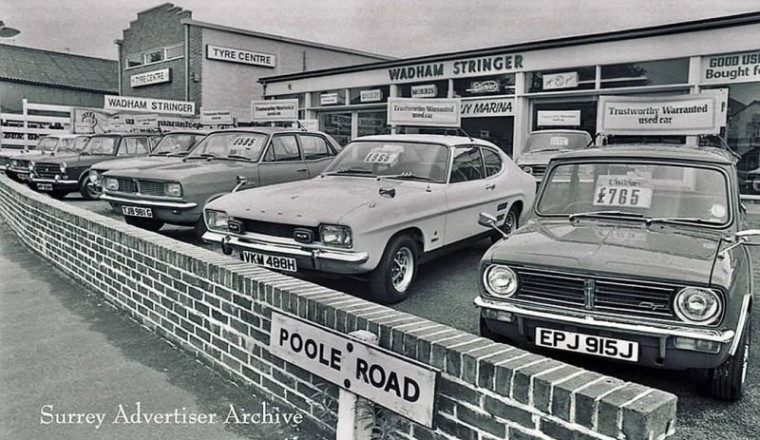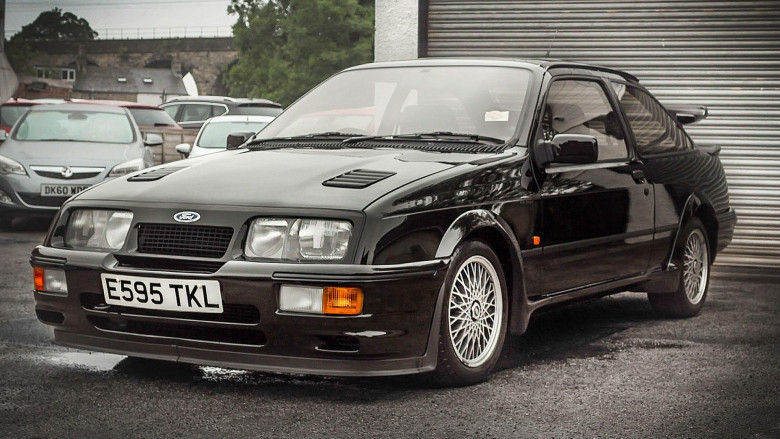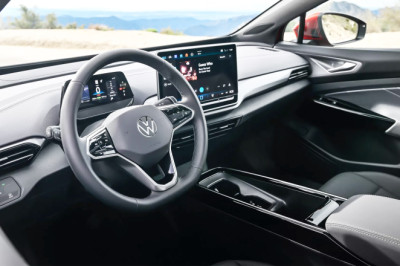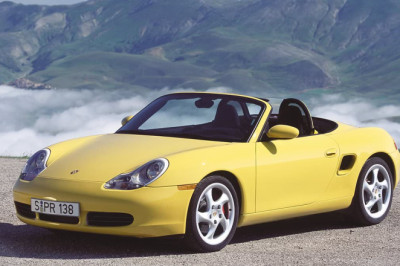
As we look ahead, emerging trends and changing tastes reveal which cars are likely to become future classics, driving not just passionate collectors but also savvy investors to seek out the next icons. This comprehensive guide explores the fundamentals of classic car investment, the most promising candidates on today’s market, and essential strategies for success.
What Defines a Future Classic Car?
A future classic is a car that, while perhaps mainstream or overlooked at launch, is predicted to rise in desirability, rarity, and value over time. Certain attributes make vehicles stand out as investment-grade classics, including:
-
Distinctive design and styling
-
Limited production numbers
-
Proven motorsport pedigree
-
Significant cultural or technological impact
-
Enthusiast community recognition
-
Strong provenance and original condition
Identifying these models early can lead to impressive returns as they appreciate and become more sought-after.
How to Spot a Future Classic
Several criteria help identify vehicles with classic potential:
-
Low-volume models, especially limited editions or anniversary releases
-
Cars with innovative engineering (such as first-generation hybrids, turbocharged engines, or advanced chassis)
-
Cult favorites in the enthusiast community (think ‘90s JDM icons or early performance SUVs)
-
Models that marked historic milestones, either for the manufacturer or the automotive world
Best Bets for Future Classics
Here’s a table of vehicles with the strongest potential to become future classics, including reasons for their collectibility and current market trends:| Model | Years Built | Key Features | Current Pricing | Classic Potential |
|---|---|---|---|---|
| BMW E46 M3 | 2000-2006 | High-revving inline-six, manual | £20,000–£40,000 | Rising |
| Porsche 996 Turbo | 1999-2005 | Mezger engine, AWD, rare spec | £28,000–£60,000 | High |
| Toyota GR Yaris | 2020–present | Rally homologation, AWD | £28,000–£37,000 | Strong |
| Mercedes-Benz CLK63 AMG Black Series | 2007–2008 | V8 power, limited production | £70,000–£90,000 | Very High |
| Lotus Elise S1 | 1996–2001 | Lightweight, pure dynamics | £15,000–£25,000 | Promising |
| Mazda MX-5 (NA) | 1989–1997 | Iconic roadster, pop-up lights | £5,000–£13,000 | Classic staple |
| Honda Integra Type R (DC2) | 1995–2001 | High-revving VTEC, lightweight | £10,000–£25,000 | Excellent |
| Audi RS6 Avant (C5) | 2002–2004 | Twin-turbo V8, practical | £14,000–£25,000 | Gaining attention |
| Subaru Impreza WRX STI (blob-eye) | 2003–2005 | Rally history, turbo AWD | £8,000–£18,000 | High |
| Ford Focus RS Mk1 | 2002–2003 | Turbo, limited UK run | £10,000–£20,000 | Good |
Why These Models Stand Out
-
The BMW E46 M3 and Porsche 996 Turbo blend performance with everyday usability, making them prime targets for collectability.
-
Toyota’s GR Yaris and classic JDM icons like the Integra DC2 and Subaru WRX STI are drawing younger buyers, ensuring steady demand.
-
Low build numbers, special editions, and motorsport links boost desirability for cars like the CLK63 AMG Black Series and Focus RS Mk1.
-
Legend status attached to the Mazda MX-5 and Lotus Elise continues to keep prices buoyant and interest strong.
Key Investment Strategies
-
Condition and Provenance
Buy the best example you can afford, with full service history, minimal modifications, and original features. Factory-fresh paint, matching numbers, and rare options increase value. -
Mileage and Usage
Lower mileage vehicles tend to bring higher returns. However, cars that have been driven regularly, but carefully maintained, can also be attractive if they show good health and reliability. -
Storage and Maintenance
Investing in proper storage and routine maintenance pays off long-term, safeguarding your asset against depreciation from wear and environmental damage. -
Documentation and History
Keep all records, MOTs, receipts, and provenance details. The more thorough the history, the greater the future value and buyer confidence. -
Watch Market Trends
Monitor auction results, enthusiast publications, and online marketplaces. Stay ahead of shifting tastes—cars popular among younger enthusiasts now may command significant premiums as time goes on.
Six Classic Car Investment Pitfalls to Avoid
-
Overpaying in speculative booms without strong fundamentals
-
Neglecting due diligence on accident/damage history
-
Buying heavily modified or “resto-modded” vehicles unless originality is not a concern
-
Failing to consider restoration costs and availability of parts
-
Skipping proper insurance arrangements for collectible assets
-
Ignoring changes in legislation that could affect eligibility for use (such as ULEZ rules)
Ford Sierra Cosworth RS500 with just over 5,000 miles recently fetched nearly £600,000 at auction

Pictured is the Ford Sierra Cosworth, a car that in its heyday wasn’t exactly known for quality or refinement. Back in the late 1980s, this car was primarily praised for its raw performance capabilities rather than polish or luxury, with many initially overlooking it as a rough-around-the-edges “blue-collar supercar.” Yet, who would have predicted that this modest rally legend would become one of the most sought-after and valuable classic cars in 2025?
When the Sierra Cosworth RS500 debuted in 1987, its price was around £20,000—a hefty sum at the time but affordable for performance car enthusiasts looking for a homologation special. Fast forward nearly four decades, and pristine, low-mileage examples sell for eye-watering sums. For instance, a virtually untouched Ford Sierra Cosworth RS500 with just over 5,000 miles recently fetched nearly £600,000 at auction—roughly 30 times its original retail price. Even more common Cosworth Sierra models have jumped in value, with average valuations rising from around £20,000 a few years ago to upwards of £33,000 today.
This staggering appreciation—estimated at over 1,500% for the rare RS500 versions—has pushed the Sierra Cosworth from underestimated rally weapon to blue-chip collectible. Factors behind this surge include its limited production numbers (only about 5,500 RS Cosworths and 500 factory-built RS500 models), motorsport pedigree, and growing recognition among enthusiasts who value its raw driving experience and motorsport heritage.
The Ford Sierra Cosworth’s journey from “rough but fast” to highly prized classic is a striking example of how performance, rarity, and history combine to transform a car’s status and value over time—for investors and fans alike, it represents the unexpected rewards possible in the classic car market.
Understanding the world of classic cars goes far beyond a simple appreciation for beautiful, timeless machines. It’s a dynamic market shaped by a blend of history, culture, scarcity, and passion—and for those looking to invest, grasping its nuances is essential. Classic cars have long been more than just vehicles; they are pieces of art and history that often outshine traditional investments by offering both emotional and financial rewards. The value of a classic car hinges on factors like rarity, historical significance, and iconic status. Cars that are scarce, have a fascinating backstory, or symbolize a milestone in automotive design or a motorsport legacy tend to command the highest prices. Understanding these pillars helps investors identify potential gems rather than simply chasing trends or aesthetics.
While jubilee models like the Jaguar E-Type or the Porsche 911 have enjoyed steady appreciation for decades, the real thrill of classic car investing lies in spotting the emerging stars. These are vehicles that may not yet have reached their peak in value but offer distinct attributes that set them apart—limited-edition runs, unique engineering, or cultural cachet that resonates with newer generations of enthusiasts. Take, for example, the rise in popularity of the early 2000s BMW M3 (E46), which balances classic sports car performance with modern reliability, or rare homologation models such as the Toyota GR Yaris, which has already begun to catch the eye of collectors worldwide. These emerging classics, often overlooked in mainstream markets, can surprise investors with significant appreciation if chosen wisely.
Classic car auctions stand as the beating heart of this market, offering both a stage and marketplace for collectors and investors to find their dream cars. The atmosphere of an auction, whether in a grand hall or digital platform, carries unique excitement but also demands caution and savvy. Auctions provide transparent pricing through competitive bidding and access to rare models that might never appear on traditional sales platforms. However, buyers must be vigilant; performing thorough inspections, securing detailed documentation, and understanding the auction terms are non-negotiable steps to ensure that the purchase is sound. The auction arena is also where competition is most fierce, and an informed bidder can find spectacular bargains or pay dearly for impulse decisions.
Successful classic car investments depend heavily on factors that go beyond the car’s make or model. Condition is paramount—original, well-maintained cars typically attract higher prices than heavily modified or poorly restored ones. Originality and provenance—the documented history of the vehicle—play equally important roles in creating buyer confidence and future value. Knowing the story behind the car, its previous ownership, and maintenance records often separate a good investment from a regrettable purchase. Savvy investors also learn to distinguish true potential appreciation by looking beyond initial costs and considering restoration quality, market shifts, and buyer demand. Common pitfalls include overpaying for trendy restorations or falling for cars with incomplete or questionable histories.
The classic car market of today is far from static; it’s continuously evolving, influenced by shifting demographics, technological advancements, and changing tastes. Younger car enthusiasts tend to favour different types of vehicles than past generations, such as sports-oriented Japanese imports or early electric classics, reshaping demand. Meanwhile, the increasing role of technology—from online auctions to blockchain-based ownership records—is transforming how collectors buy and sell. Understanding these trends equips investors with foresight to anticipate which models will gain prominence, and helps them position their collections in emerging growth areas. Market experts predict a growing interest in affordable, practical classics over the next decade, alongside a sustained reverence for golden era icons.
Restoration projects form another fascinating aspect of investing in future classics. For some investors, transforming a neglected vehicle into a stunning showpiece or a reliable driver brings tremendous satisfaction and added value. But restoration is both art and science, requiring meticulous attention to historical accuracy and quality workmanship to preserve or enhance value rather than diminish it. A poorly executed restoration can destroy collector interest, while authentic, well-documented work can elevate a car’s status and price by thousands. Managing costs, sourcing rare parts, and selecting the right project car are crucial decisions that often define success in this niche.
Car enthusiasts and investors alike benefit from a robust community offering knowledge, support, and connections. Online forums, dedicated classic car websites, and specialist publications provide invaluable resources for research, advice, and staying current with market developments. These platforms facilitate networking with experts, attending events, and exchanging tips that can inform buying decisions or spark passion projects. For investors, tapping into this community can also provide leads and insights not readily available through public channels.
Real-life success stories add depth and inspiration to understanding classic car investment. Take, for instance, the transformation of an overlooked 1990s Toyota Supra into a highly prized collector’s car that dramatically appreciated in value due to rarity and enthusiast demand. Or the acquisition of a low-mileage Porsche 911 from the 1970s that doubled its worth over a decade. These case studies reveal key factors behind successful investments: timing, research, patience, and an understanding of market psychology—lessons every aspiring collector should keep close.
To further enrich this perspective, seasoned classic car experts, collectors, and industry veterans provide their insights and advice. They often emphasise the importance of passion combined with prudent strategy—after all, every great investment starts with love for the car itself. Their recommendations stress patience, thorough due diligence, and an awareness of the wider automotive culture, encouraging buyers to invest not just with their wallets, but with their hearts and heads aligned.
In essence, the journey into future classic cars is as rewarding as it is complex. It requires balancing emotion and logic, art and commerce, and a deep appreciation of automotive history paired with sharp market acumen. Armed with these insights, investors and enthusiasts alike can confidently navigate the vibrant classic car market—ready to discover, preserve, and perhaps even profit from the automotive legends of tomorrow.
Conclusion
Investing in future classic cars blends passion with prudence—it’s about recognising timeless value, embracing automotive history, and making smart, informed purchases that can grow in worth and prestige. As tastes evolve and new generations enter the enthusiast fold, the classic car market promises continued excitement and opportunity for those who have a keen eye, solid strategy, and a true love for driving.
Whether you aspire to own a cherished icon or build a diverse collection for the future, this guide will help you embark on your journey into the rewarding world of vintage automobile investment.














